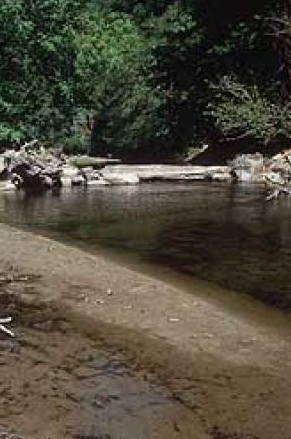
 July 11, 2011 – Studies by
July 11, 2011 – Studies by
U.S. Department of Agriculture (USDA) scientists have confirmed that the
presence of Escherichia coli pathogens in surface waters could result from the
pathogen’s ability to survive for months in underwater sediments. Most E. coli
strains don’t cause illness, but they are indicator organisms used by water
quality managers to estimate fecal contamination.
July 11, 2011 – Studies by
U.S. Department of Agriculture (USDA) scientists have confirmed that the
presence of Escherichia coli pathogens in surface waters could result from the
pathogen’s ability to survive for months in underwater sediments. Most E. coli
strains don’t cause illness, but they are indicator organisms used by water
quality managers to estimate fecal contamination.
These findings, which can
help pinpoint potential sources of water contamination, support the USDA
priorities of promoting sustainable agriculture and food safety.
 |
|
Soil scientist Yakov
Pachepsky works at the Agricultural Research Service (ARS) Environmental
Microbial and Food Safety Laboratory in Beltsville, Md. He is conducting
studies to learn more about where the E. coli pathogens in streambeds come
from, where they end up, and how long they can survive.
Lab studies conducted by
Pachepsky and his colleagues suggested that non-pathogenic strains of E. coli
can survive much longer in underwater sediments than in the water column
itself, and provided the first published evidence that E. coli can over winter
in the sediment.
The results also indicated
that the pathogens lived longer when levels of organic carbon and fine sediment
particles in the sediment were higher. In addition, when organic carbon levels
were higher, water temperatures were less likely to affect the pathogens’
survival rates.
The researchers also
collected three years of data on stream flow, weather, and E. coli levels in
water and sediments from a stream in Pennsylvania that was fed by several
smaller tributaries. Then they used the information to calibrate the Soil and
Water Assessment Tool (SWAT), a model developed by ARS scientists that predicts
how farming practices affect water quality on watershed scale.
The resulting simulations
indicated pasture runoff contributed to E. coli levels in nearby streams only
during temporary interludes of high-water flows. Since the SWAT model currently
does not include data on E. coli levels in stream bed sediments, this research
indicates that SWAT simulations would overestimate how much E. coli
contamination in surface waters is due to pasture runoff.